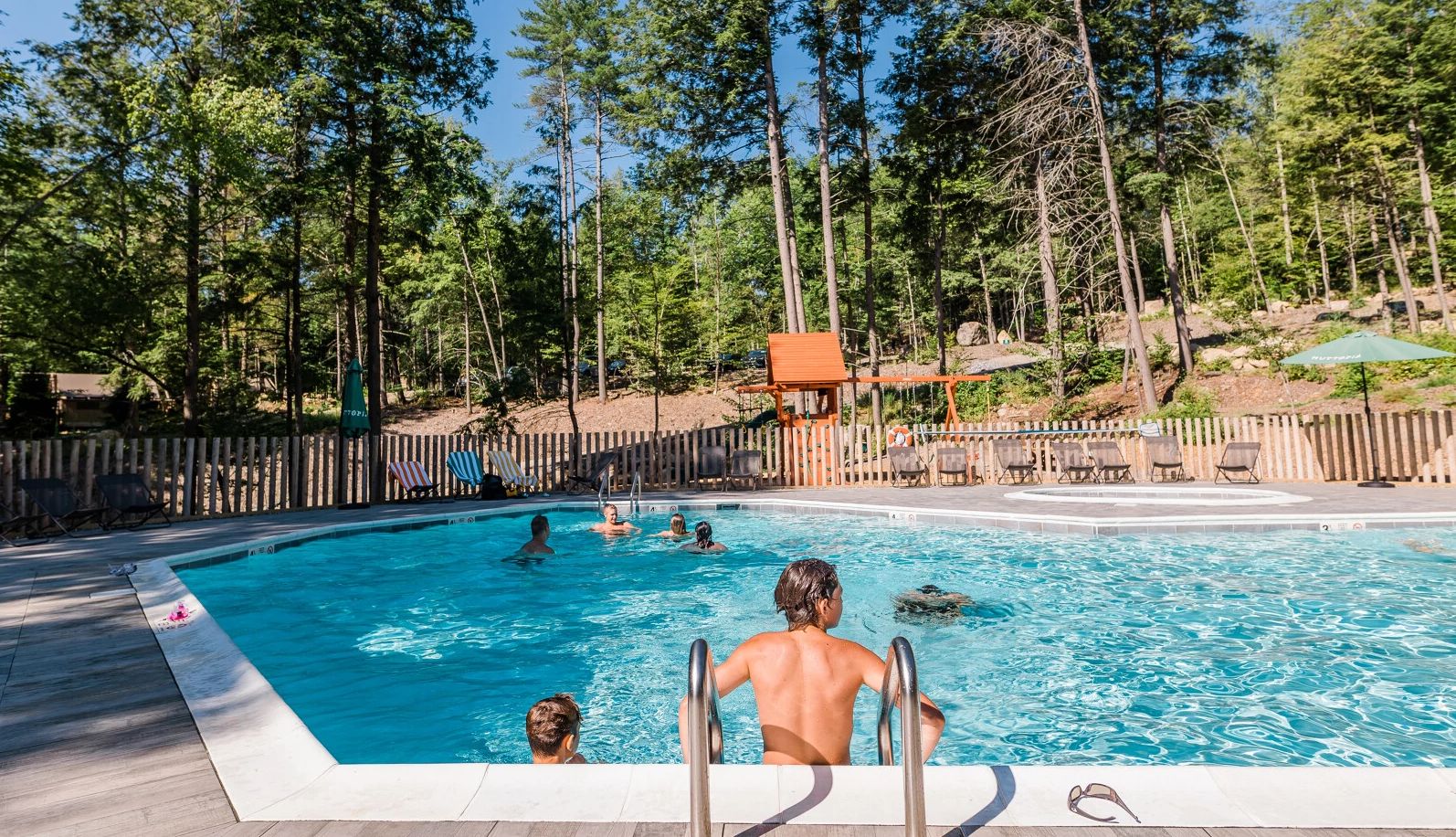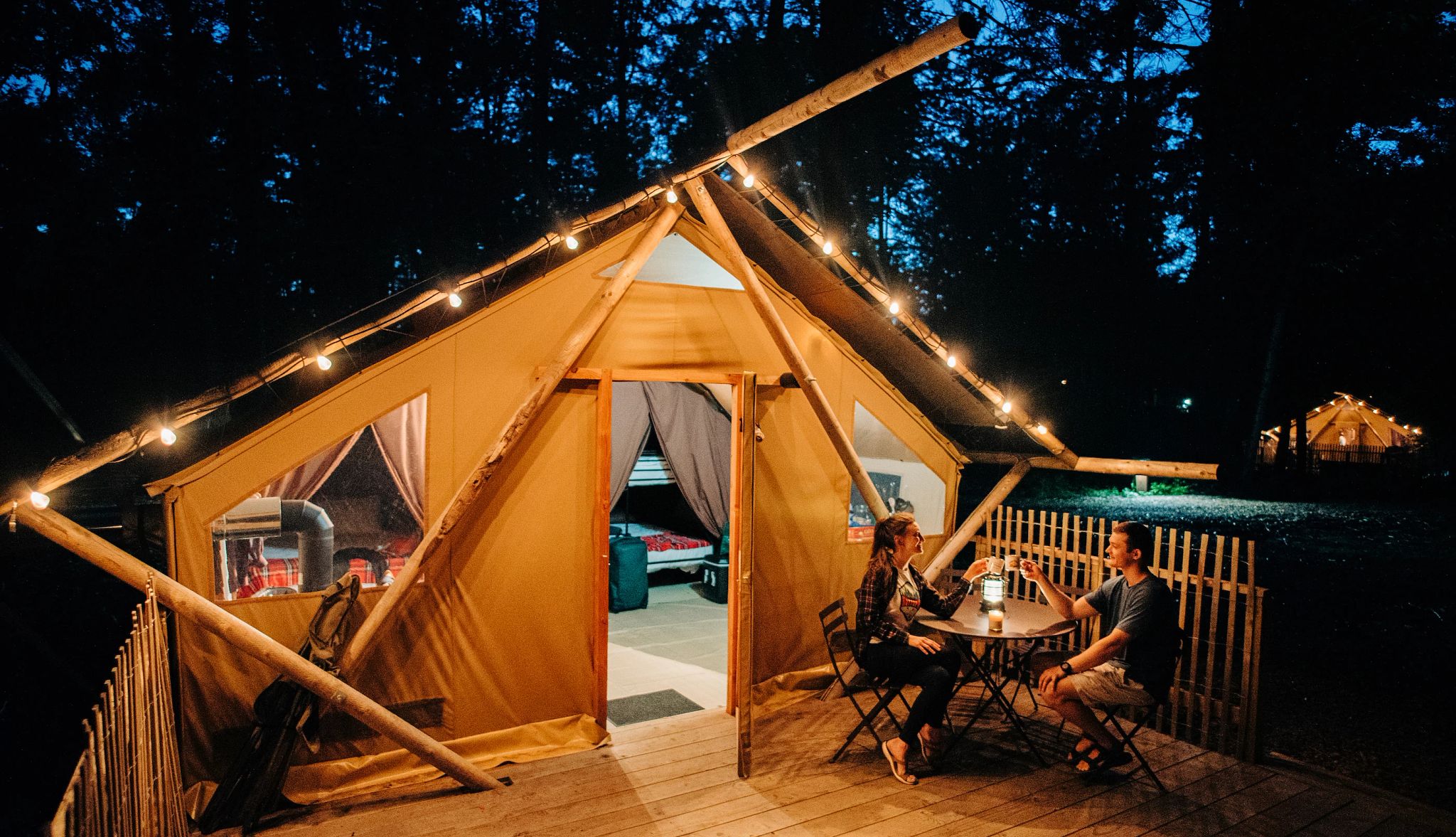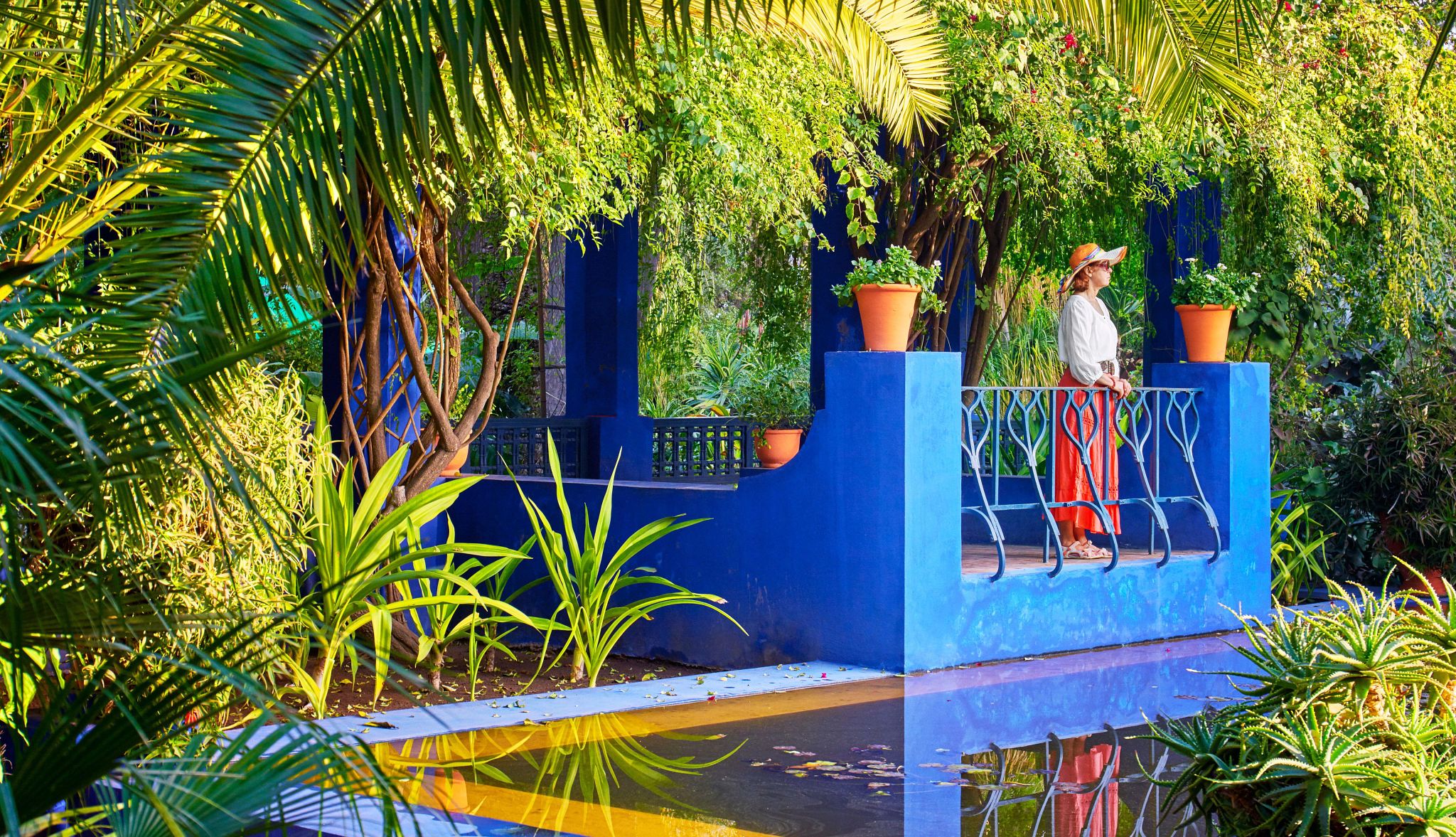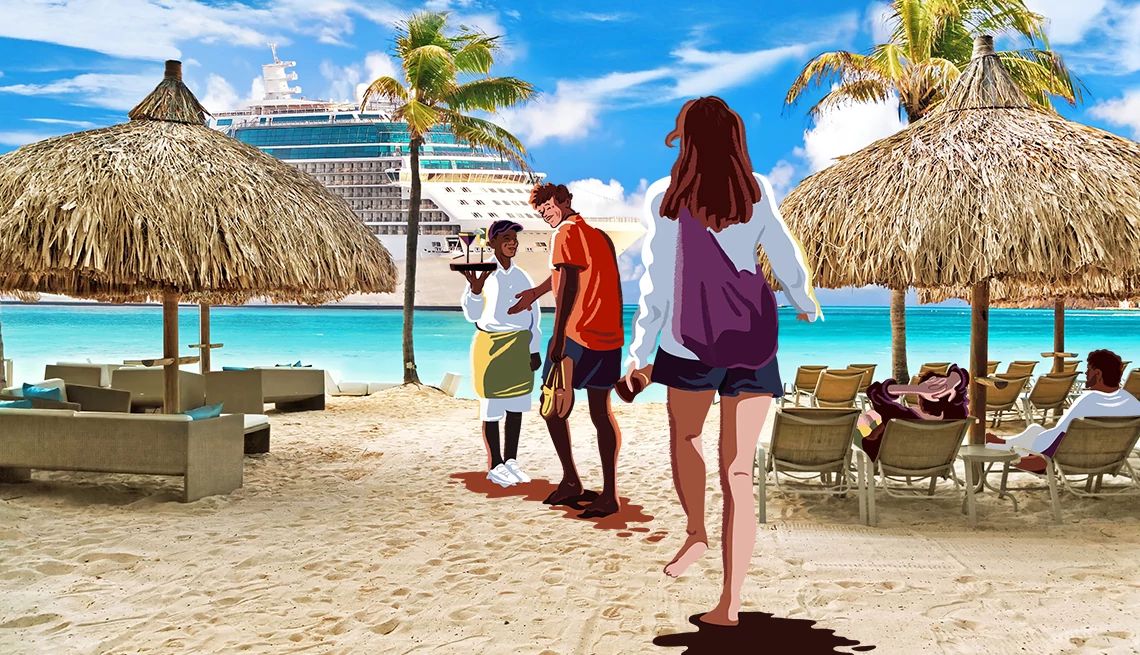AARP Hearing Center
Amy Alipio,
It’s good to get outside. Spending time in nature can lead to “improved health, quality of life, and well-being” in older people, according to the International Journal of Environmental Research and Public Health. But sleeping bags and outhouses can be less than age-friendly. The solution is glamping — glamorous camping. In 2023, cabin and glamping usage doubled from 2014, according to Kampgrounds of America.
Set on platforms, glamping tents have beds outfitted with linens, and sometimes in-unit bathrooms and climate control. Tiny homes and boutique RV parks also can fall under the glamping umbrella. “Glamping is good for people who don’t want to go through all the trouble of setting everything up like they did 20 years ago with the kids,” says Annette Ostrander-Fenske, cofounder of Colorado’s Rustic Rook Resort.
State parks
Typically less crowded than their national cousins, state parks can be equally scenic. One of the most popular is South Dakota’s Custer State Park. Its annual Buffalo Roundup during the last week of September attracts some 20,000 visitors. But other weeks provide a quieter experience, where you can spot prairie dogs and pronghorn and bighorn sheep. Cabins at the park’s resort (from about $265 per night) are scattered throughout four lodge areas, with amenities ranging from kitchenettes to just a fridge and microwave.
Presque Isle State Park in Pennsylvania surprises visitors who may not realize the state has a shore. This peninsular nature reserve features swimming beaches along Lake Erie. Pettinato Beach provides an accessible ramp to the water’s edge; be sure to catch the glorious sunsets. An important pit stop for birds on the Atlantic flyway, Presque Isle also supports communities of purple martins and piping plovers. Visitors can head seven miles out to the camping cabins and yurts at Presque Isle Passage, a private campground. Guests provide their own bed linens, but amenities can include in-unit bathrooms and kitchen areas. Cabins start at about $120 per night.


Adirondack Park in upstate New York sprawls across some 3,000 lakes and ponds and 2,000-plus miles of hiking trails, one of the largest protected wilderness areas east of the Mississippi River. In the Lake George area, Huttopia Lake George–Adirondacks tucks roomy glamping tents — inspired by the domiciles of French Canadian trappers — amid tall pines and beech trees. To maintain a feeling of seclusion, cars are parked in areas away from tents; wheeled carts help transport your gear to your forested hideaway. Glamping tents start at about $100 per night.
Soulful-eyed, seagrass-grazing manatees are the undeniable stars of Florida’s Manatee Springs State Park. In cooler weather particularly, they gather in large numbers around the park’s warm springs. Keep an eye out for them from the 800-foot-long accessible wooden boardwalk winding through the cypress forest overlooking the springs. In any season, visitors to the park can hike 8.5 miles of trails or kayak in startlingly clear waters. Glamping at Manatee Springs offers queen-bed tents (about $100 per night) that sport a beachy aquamarine theme and include cooling and heating.
Glampgrounds
Some nature spots seem obvious locations for glamping sites — and others are a surprise. Take Governors Island in New York City, a 10-minute ferry ride from lower Manhattan. The car-free former military base has landscaped lawns for picnicking, a 2.2-mile perimeter trail for walking or biking, and a 15,000-square-foot spa. “It’s like a break from the intensity of New York while still staying in New York,” says visitor John O’Boyle of Westfield, New Jersey, who writes the blog The Empty Nest Explorers with his wife, Debbie. She says Collective Retreats’ tent houses on the waterfront are “hidden in plain sight” — because everyone walking by is looking at the epic view of the mountain range of New York City skyscrapers and its constellation of city lights. Tents run from about $325 per night.















































































